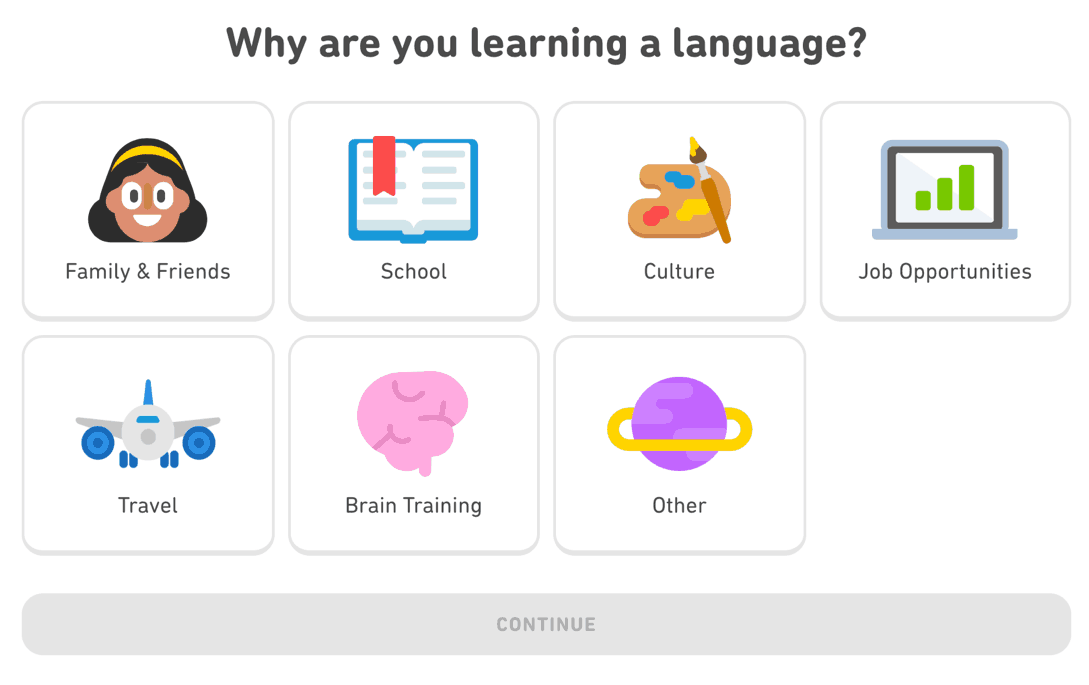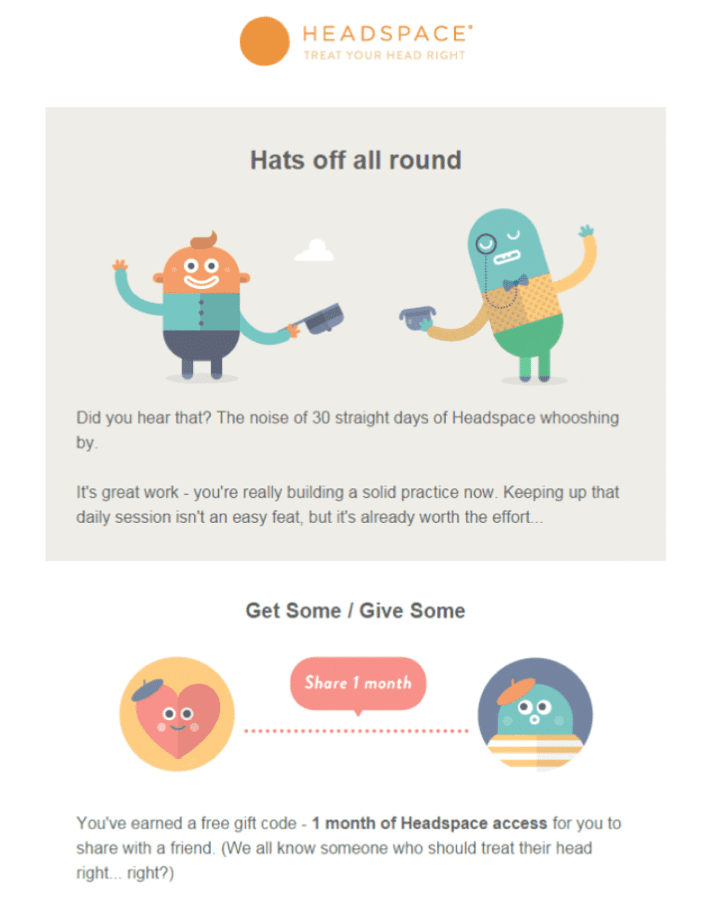Last updated on 1st December 2023
In a world of infinite choice, brand loyalty is in short supply these days. But the payoff for nurturing loyal customers is massive.
Because 61% of loyal customers will go out of their way to buy from their favourite brands and a similar number (60%) will buy from them more frequently, according to InMoment.
And this is where customer onboarding comes in.
Onboarding is all about giving your customers the best possible chance of getting the most out of your product or service. The better they understand it, the more useful it becomes.
When you onboard well, providing ongoing training and support, your customers are far likelier to stick with you for the long-haul.
How onboarding optimises user retention – 5 statistics
In 2020 we carried out onboarding research with a sample group of 216 people to find out more about their experiences as customers. We specifically wanted to know what role onboarding played in their experiences, how well brands are performing in that respect, and how they could do better.
Here are the standout onboarding statistics to emerge from our survey, and what your business can learn from them…
1. Over 90% of customers feel that the companies they buy from ‘could do better’ when it comes to onboarding new users/customers.

Perhaps the most shocking takeaway from these onboarding statistics isn’t that nine out of ten customers are only mildly satisfied with the onboarding experience they receive, but that they still buy from these companies anyway.
Which goes some way to explaining why 44% of businesses prioritise customer acquisition, compared to just 18% that favour customer retention. But if ever there was an opportunity to blaze your own trail – this is it.
An effective onboarding programme can set your business apart from, well, most other brands it seems. And keeping your customers engaged is the best way to create loyal brand ambassadors.
You’ll not only reduce churn (whenever you lose a customer, essentially), but you’ll also avoid the expense of having to spend 5-25 times more to attract new customers than retain your existing ones.
Win-win.
A major element of customer onboarding is to manage user expectations from the beginning. Ideally, you should give your customers a clear idea of your product’s unique selling points and make their journey to proficiency as easy as possible.
Language-learning app Duolingo does this brilliantly. Their secret sauce is a process of gradual engagement that reveals what users can expect before they’ve even registered.
Interrogating their customers’ motivations from the outset also helps Duolingo to deliver a more personalised experience and allows users to set their own goals, making them far likelier to maintain their studies.

Duolingo’s step-by-step demonstration of how their language classes work includes handy hints from their owl mascot to show how users are supported along the way.

Once the initial lesson is complete, students are rewarded with points and a free gift to maintain their interest. Duolingo also uses progress bars and rewards for ‘streaks’ (back to back lessons) to ramp up the engagement.

Then, and only then, are customers asked to create a profile. By which time they’re already invested. It’s subtle, fun and there’s zero hard sell. That’s some muy bien onboarding right there!

2. 86% of people say they’d be more likely to stay loyal to a business that invests in onboarding content that welcomes and educates them after they’ve bought.

Our onboarding research shows the vast majority of customers are willing to reward businesses that onboard well with their loyalty.
Retaining customers is much like any other relationship; it takes a certain amount of effort and nurturing to keep it going.
Closing the sale is just the beginning of the process. It’s important to keep the dialogue open. Check in regularly to find out how things are going. Find out if there are any sticking points and offer solutions. And educate users about any new features you’re launching, because the education process doesn’t just apply to new users.
The hard truth is if your customers aren’t using your product, you’re at risk of losing them. And fast.
Consider this: 40-60% of software users will open an app once and never log in again, according to Groove HQ. Which makes it essential to make the gap between sign-up and first success as short as possible. Step-by-step tutorials, unlimited support and good-old-fashioned encouragement all help towards achieving this goal.
Reaching a blissful state of tranquillity does wonders for your mental health but it’s not easy to achieve. Knowing this, and that it takes an average of 66 days to form a new habit (not the 21-days we’ve been led to believe), meditation app Headspace makes sure to check in with customers regularly to keep them motivated.

It’s a great idea to reward your customers with added value from time to time. Something extra to remind them how awesome your brand is and why they chose it in the first place. Headspace does this with special offers that unlock added features, making their service that little bit more indispensable.

Referral incentives are a great way to leverage the goodwill of happy customers and grow your business. After 30 solid days of usage, Headspace can safely assume that a user is invested in their product. What better time to incentivise their latest brand advocate to share the love with one of their friends?

3. 8 in 10 users say they’ve deleted an app because they didn’t know how to use it.

Our retention statistics prove that even if you’ve got the best app – or any other product for that matter – known to mankind, if your customers don’t understand how to use it, they won’t stick around to find out. Nearly one in every two apps is uninstalled within 30 days, according to AppsFlyer.
But it doesn’t have to come to that if you’re willing to put the hard yards in.
We expect a certain level of interactivity with apps. If that’s your business, there are plenty of tricks you can use to keep your customers clued up.
Simple setup wizards can be a great tool for getting customers started. Rather than leaving your customers with empty space to fill in, it’s also good onboarding practice to fill “empty states” with actionable content that explains what information goes into that particular field.
Email marketing platform Mailchimp prides itself in connecting businesses with “the right person at the right moment”. Given that they’re all about enabling customers to build email campaigns in minutes, you’d expect them to follow up those claims with some intuitive user experience (UX) and crystal-clear tutorials.
Spoiler alert: they do, and well.
Mailchimp makes building your first email campaign super-easy. Their templates are instructional in their own right and encourage users to explore independently.
This is a great example of how to empower customers with just enough information to be effective without spoon feeding them to the extent that they only develop a surface-level understanding of how your product works.

Pop-up tip banners, like the ones employed by Mailchimp, are a great way to drop knowledge and help a user to navigate your product.
Notice how tips are purposefully short and to the point to keep things moving along smoothly and without overloading the user with too much information.

Churn is an inevitable factor of business that can’t be stopped but can be reduced. Gathering valuable customer feedback is essential for improving your service. Mailchimp realises this fact.
Whenever a customer deletes their account they cross-sell their simplified sister platform, TinyLetter, just in case the user found their experience overly complicated. They also ask for feedback about why their customer is cutting ties.

Of course, every departing customer calls your onboarding process into question. But if you follow Mailchimp’s lead, you too can gather invaluable insights to sharpen your processes and turn a negative into a positive.
4. More than half (55%) of people say they’ve returned a product because they didn’t fully understand how to use it.

If there’s one recurring theme to emerge from our onboarding research, it’s that customers have a low tolerance for products that aren’t particularly user-friendly or intuitive. It’s therefore worth taking every step possible to make your product as accessible as possible.
You can reduce the likelihood of returns, refunds and unnecessary administrative costs by giving your customers every opportunity to learn exactly how your product works – both new and existing customers.
It’s a great idea to think about possible customer pain points and ensure they never become an issue. Listen to customer feedback and address any recurring queries with blog posts, answering frequently asked questions (FAQs), and circulating hints and tips in email newsletters.
Not only does this approach empower your customers with the tools they need to proactively make the most of your product but, as an added bonus, you can relieve the pressure on your customer service team too.
The more hints and tips you can provide up front, the fewer queries they’ll need to field from frustrated customers.
5. Nearly two-thirds (63%) of customers say that onboarding – the level of support they’re likely to receive post sale – is an important consideration in whether they make the decision in the first place.

Don’t underestimate the power of social proof in any purchasing decision. Customer reviews can shed significant light, for better or worse, on how a brand supports its customers after a sale has been made.
The obvious antidote is to make sure your customer onboarding is so good that the glowing reviews roll in. But there are other measures you can take to demonstrate your onboarding brilliance too.
Case studies and testimonial videos from existing customers can help persuade new ones to come onboard and align themselves with your brand.
You might even say they’re a necessity given that retention statistics from HubSpot reveal that 55% of consumers no longer trust the companies they buy from as much as they used to.
Here’s the thing: those loyal followers you’ve cultivated through your onboarding are the perfect candidates for singing your praises. It’s a cyclical process; the more you put in, the more you get back.
This case study video by Hootsuite below is a prime example of how to promote your services through the words of your customers.
Hipster Canadian backpack manufacturers, Herschel Supply Co., used Hootsuite’s social media management platform to boost their online presence and grow their business globally. To the point where it’s now an indispensable tool for their lean team of marketers.
Hootsuite’s retention of Herschel as customers from an aspirational start-up in 2009 to a household name in 2020 speaks volumes for the usability of their platform and the ongoing support they give to their customers.
The central tenet of this video is that Hootsuite takes a major backseat, mirroring the behind-the-scenes nature of its service.
Why? It’s all about putting the customer first. Which in essence is what customer onboarding is all about.
Summary
If our onboarding research proves anything it’s that brands that are killing it are in the minority.
Those that are willing to learn from these statistics, and make the effort to support their customers at every turn, are likely to reap the rewards of better customer retention and bigger profit margins in the long run.







